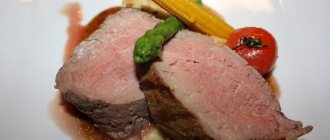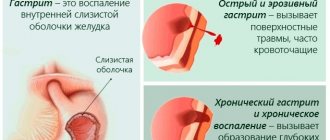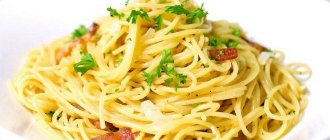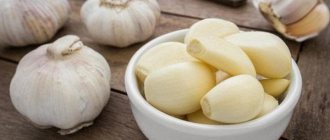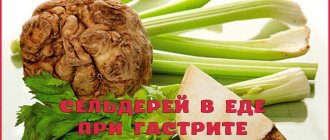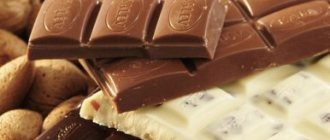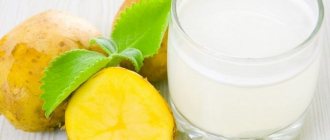If raspberry jam is not recommended for gastritis, this does not mean that any jam is not recommended. The product is endowed with a lot of useful properties: it has a general strengthening effect, improving the functioning of the digestive system. But moderate consumption is important. Jam will be valuable if you have low stomach acidity, but you should use only natural and approved types of fruit for jam. It is better to prepare the product yourself rather than buy it, because the risk of the presence of harmful additives is high.
Acceptable desserts for gastritis
Gastroenterologists strongly recommend consuming natural desserts for gastritis that do not have a negative effect on the affected gastric mucosa.
The list contains sweets that you can eat with gastritis:
- marshmallows are a delicacy based on applesauce. Natural low-calorie product;
- marmalade is made from natural juices with the addition of molasses, sugar, agar;
- jam is useful only from sweet berries;
- honey in the absence of allergies;
- sweet soufflé based on fruit puree and beaten egg whites with added sugar;
- Fruit and berry purees (apricot, pear, banana) due to their homogeneous consistency are well absorbed in the stomach.
Safe and harmful sweets
People with stomach diseases can eat desserts that do not contain artificial colors, flavors, flavor enhancers and components marked with the letter “E”. The following contents of confectionery products negatively affect the level of acidity in the stomach: yeast, baking powder, margarine, butter. Having excluded obviously harmful sweets, we can identify a number of safe goodies that people with gastrointestinal problems are allowed to consume.
Stomach-safe sweets that you can eat if you have gastritis:
- marmalade;
- jelly;
- semolina puddings;
- cottage cheese soufflé, carrot;
- marshmallows;
- preserves, jams;
- fruit puree (apple, banana, pear, apricot);
- biscuits, dry cookies "Maria".
All of the above desserts and components of traditional tea parties must be fresh and natural. If you have a stomach ulcer, you should carefully study your body’s reaction even to “representatives” of the safe list. Each body is individual and reacts differently to the same food, so general recommendations are not always useful for everyone.
Some types of sweets can be eaten with tea, for example, raspberry jam, apricot jam, natural honey. Healthy drinks (dried fruit compotes, milk and berry jelly) will be an excellent addition to oatmeal cookies and biscuits.
Sweets that are prohibited for gastritis:
- cranberry jam;
- chocolate;
- baked goods (baked goods made from shortbread, puff pastry);
- peanut butter;
- boiled condensed milk;
- ice cream;
- carbonated drinks;
- candies (lollipops, candy bars, caramel).
Cranberry is a sour berry. Even with low stomach acidity, it can cause irritation, leading to pain in the hypochondrium. Regular condensed milk for gastritis is not recommended in its pure form due to the high concentration of sugar and high fat content. However, if there are no contraindications, condensed milk can be added in small quantities to tea or chicory.
Peanut butter is another popular food among young people that should be completely avoided. Not every healthy gastrointestinal tract is able to digest it in combination with white bread or toast, let alone a sick body. Sugary carbonated drinks have no health benefits. This is a harmful drink and should not be included in the diet of a patient with gastritis. It is necessary to refrain from caramel, lollipops and sucking sweets, as these are a combination of harmful chemical components.
Sweet milk products
Condensed milk is obtained from whole milk through slow pasteurization at a temperature of 60°C. Types of condensed milk: without sugar, with sugar, with cream, boiled.
Using the classical technology for making condensed milk, it retains many of the beneficial properties of milk. When taken orally, it coats the walls of the stomach and is well absorbed by the body. It can be consumed in limited quantities for gastritis.
Sweet drinks
Allowed:
- Kissels are drinks in which starch acts as a thickener. Potato starch is added to fruit and berry jelly, and corn starch is added to dairy jelly, giving the drink a more delicate consistency;
- compotes;
- natural juices from sweet fruits;
- weak tea with milk.
Honey
Honey is consumed for gastritis not only as a delicious dessert, but also used in treatment due to its ability to have an anti-inflammatory, regenerating effect on the inflamed stomach wall. The amount of honey per day should not exceed 150 g.
Candies, chocolate, halva, marshmallows
Sweets have a complex composition with the inclusion of all kinds of taste improvers, dyes, and various essences, so nutritionists do not advise patients with gastritis to eat them. In addition, the increased sugar content triggers fermentation processes in the stomach, and the acidity of the chyme increases significantly.
You are allowed to occasionally enjoy some types of candy products:
- marmalade;
- marshmallows;
- paste;
- candies with waffle filling.
Chocolate contains large amounts of indigestible fats, caffeine and sugar. Additional components are included in the composition to give the finished product a marketable appearance. Therefore, such chocolate cannot be used in food for gastritis. Outside of periods of exacerbation, the patient can allow himself to eat a small piece of 20-50 g of dark dark chocolate.
Halva is prepared from sunflower (sesame, peanut) seeds, honey, molasses, fruit, and flour. To digest halva, the stomach must secrete a large amount of gastric juice, which irritates the inflamed mucous membrane. In addition, the significant amount of fiber in this product also negatively affects the gastrointestinal tract. Consumption of halva for gastritis provokes an exacerbation of the pathological process, increased gas formation, and a feeling of heaviness in the stomach.
Marshmallow is allowed for all types of gastritis. Having a light airy consistency, it is easily digested, and the pectin included in its composition absorbs and removes harmful substances from the body.
Chocolate and candy
It is quite difficult to give up sweets during an exacerbation of chronic gastritis. But sometimes this is the only way to improve your well-being and get rid of stomach pain. According to many doctors, it is undesirable to consume chocolate and chocolate candies if you have gastritis. These products are characterized by a high fat content, which irritate the gastric mucosa, causing pain in the left hypochondrium.
If the patient cannot give up his usual diet and does not know what sweets are possible with gastritis, then the doctor may allow him to eat no more than 50 g of dark chocolate per day. But you still have to give up chocolates that have a much more complex composition. They contain a lot of sugar, which causes fermentation in the stomach, causing acidity to rise sharply. For gastritis, only caramel is allowed, including those with jam filling and lollipops. It is better to eat them after meals and no more than 2-3 pieces at a time.
Cookie
Some types of cookies are allowed for gastritis:
- Biscuit - fresh and dry, it has low calorie content and is hypoallergenic.
- Oatmeal – creates a protective film in the stomach, relieves cramps and pain.
- Drying is a low-calorie product made from flour and water. It is permissible to eat them even during an exacerbation of pain.
Cookies containing fats, additives (nuts), and a lot of sugar should not be eaten if you have gastrointestinal diseases. Waffle fillings contain modified fats that have a harmful effect on the entire digestive tract. Industrially produced gingerbread also contains additives that increase the symptoms of gastritis: heartburn, bloating.
Determining the occurrence of the disease
Many patients with gastritis are constantly bothered by heartburn , which is why they have to drink soda. While eating, the pain subsides a little. Possible constipation. The appearance of gastritis can be accompanied by the following symptoms: pain in the head, increased sweating, weakness after each meal.
At first, people do not pay attention to the symptoms that may warn of the disease, and it turns into a chronic disease. The sooner you contact a specialist, the faster you can get rid of gastritis.
Jam
Jam is obtained by boiling berries or fruits in sugar syrup. There are few vitamins there, since they are destroyed by boiling, but there are many microelements - iron, potassium, calcium, selenium, manganese - necessary for the normalization of metabolic processes. Jam made from berries that have regenerative properties is especially useful: sea buckthorn, raspberry. It is believed that strawberry jam contains substances that prevent the development of cancer cells.
Jam is completely excluded from the diet only during exacerbations of erosive gastritis and stomach ulcers. In other cases, jam can be included in the diet in limited quantities.
Sugar
Excess sugar leads to excessive fermentation, which creates a feeling of fullness in the stomach and belching. In case of stomach pathologies, sugar should be replaced with honey (if there is no allergy).
Treatment with milk
Goat milk therapy is widely used by many patients. Treatment of gastritis with a dairy product follows a simple scheme:
- On an empty stomach, drink 1 glass of milk 2 times a day.
- At the beginning of treatment, limit yourself to half a glass, which should be drunk in small sips.
- The dose should be increased gradually.
Traditional medicine suggests using milk with honey for gastritis. This effective method will quickly eliminate unpleasant symptoms and aggravation. The course of treatment lasts 3 weeks. Recipe:
Mix the ingredients and drink 1 glass every day. The therapy is absolutely safe unless you are allergic to the active ingredients.
Homemade sweets for gastritis
In order to diversify the diet of a patient with gastritis, dietary dishes are prepared at home:
- fruit and milk mixtures are made from fermented baked milk with the addition of fruits or berries;
- curd puddings with semolina;
- cottage cheese casseroles;
- homemade oatmeal cookies;
- berry jelly;
- compotes, jelly;
- unhealthy pastries;
- dumplings with cherries.
Forbidden sweets
- fruits: all types of citrus fruits, kiwi, grapes;
- chocolate;
- halva and other oriental sweets with nuts;
- cakes, pastries;
- butter cookies;
- dried fruits;
- cornflakes or popcorn;
- crackers with poppy seeds;
- sweet carbonated drinks;
- any types of chewing gum (chewing gum).
What sweets are contraindicated
Various types of sweet desserts for gastritis are classified as prohibited, because they not only contribute to the development of the disease, but also during seasonal exacerbations can cause severe pain in the stomach.
Prohibited sweets include:
- dried and dried fruits, which can damage the thin walls of the stomach;
- cakes, muffins and pastries prepared using butter or vegetable oil, spread or margarine;
- baked goods with a lot of cream or chocolate glaze;
- deep-fried donuts;
- halva containing fiber contributes to the exacerbation of gastritis;
- raspberry jam;
- honey or bread kvass and carbonated drinks;
- oranges, grapefruits, lemons, tangerines and other types of citrus fruits;
- chocolate and sweets containing it;
- fatty ice cream;
- desserts containing alcohol;
- yeast bread, buns and other baked goods;
- packaged juices.
Sweets for gastritis with high and low acidity
For chronic gastritis with high acidity, jelly is especially useful, as it envelops the gastric mucosa and has an alkalizing effect. You can eat marmalade, marshmallows, marshmallows, savory cookies, honey, puddings, souffles, cottage cheese casseroles without dried fruits.
Juices are especially useful for gastritis with low acidity, as they stimulate the glands of the mucous membrane that secrete gastric juice. Before drinking, natural juices are diluted with water 1:1. Sour berry jam: quince, plum, currant, blueberry also enhance the production of enzymes.
Honey regulates gastric secretion in both hyperacid gastritis and atrophic gastritis.
What is gastritis, its types
Gastritis is an inflammation of the stomach lining. It comes in several types: with normal acidity, with low acidity, with high acidity and with achylia - the complete absence of acid. There are acute and chronic gastritis.
The cause of acute illness may be intoxication with pathogenic microorganisms or their toxins, drinking alcohol, taking medications, a large amount of fatty foods in the diet and food allergies to a particular product.
Chronic gastritis develops gradually or from acute gastritis with improper treatment, or occurs. Like a disease on its own. It is characterized by pain and heaviness in the epigastrium and various dyspeptic disorders - nausea, belching, heartburn. With a long course - vitamin deficiency, weight loss, weakness, dizziness.
Restricted sweets
There is a group of sweet foods about which nutritionists have no consensus.
Melted ice cream lowers the acidity level of gastric juice and relieves the severity of symptoms. But the argument against it is that during the production of ice cream, a large number of thickeners, flavors and other chemicals are added to it, which, of course, will not be beneficial for stomach diseases.
All types of chocolate, especially milk and white, contain trans fats, for the disposal of which even more hydrochloric acid is synthesized, irritating the already inflamed mucous membrane. It is acceptable to occasionally eat a small piece of dark chocolate.
Filled sweets, lollipops, and caramels have a complex composition with numerous nutritional additives. If you feel well and have no symptoms, you can eat 2-3 sweets with tea.
Homemade jam with low acidity is consumed with milk or herbal tea. If you have hyperacid gastritis, it is better to refrain from taking jam.
General Dietary Instructions
A separate diet is recommended for each type of gastritis (autoimmune, bacterial and chemical). But all nutritional recommendations for people with inflamed gastric mucosa are largely similar, since the principles of a proper and healthy diet are universal:
- meals should be fractional, that is, a person should eat small portions every 3-4 hours;
- It is prohibited to consume canned food, semi-finished products, and fast food;
- It’s better to cook food yourself to control the composition;
- Among the methods of heat treatment, it is better to give preference to boiling and steaming, avoiding frying;
- Products that can cause irritation to the mucous membrane (sour fruits and berries, hot spices and seasonings) are not recommended.
Many patients of a gastroenterologist have a natural question: is it possible to eat sweets with gastritis? In the acute stage of the disease, it is better to forget about sweet foods, giving preference to the most strict diet, consisting of cereals, fish and meat boiled in water, vegetarian broths, milk and boiled vegetables.
But in the remission stage, patients can afford some sweets. You just need to know which desserts can be eaten periodically in small quantities during remission, and which ones cannot.
Condensed milk and ice cream
The list of sweets that are possible for gastritis should be supplemented with two more products. These include condensed milk and ice cream. But only when using them should you follow your doctor’s recommendations.
Condensed milk can even be beneficial for gastritis, but only if it does not contain dyes or flavor enhancers. In addition, it is recommended to eat regular condensed milk rather than boiled milk, since the healthy one contains fewer nutrients.
Ice cream for gastritis should be eaten soft, when it has melted a little. If it is a product of good quality and low in fat, then it will even be useful during an exacerbation of the disease. It has been proven that ice cream made from natural milk helps reduce stomach acidity. At the same time, the clinical manifestations of gastritis decrease. But popsicles should be consumed with caution, unless they are made from sweet fruits and berries.
